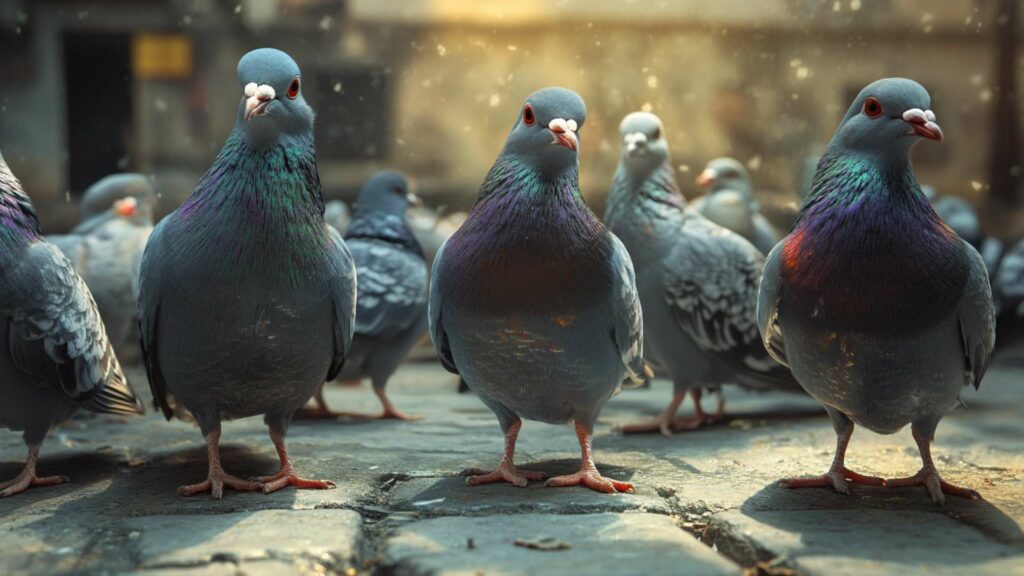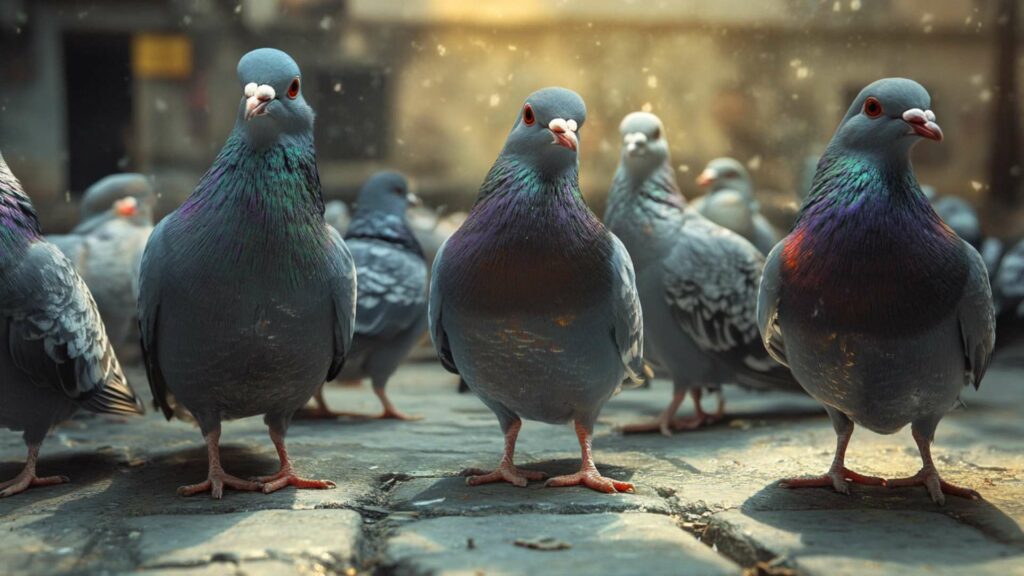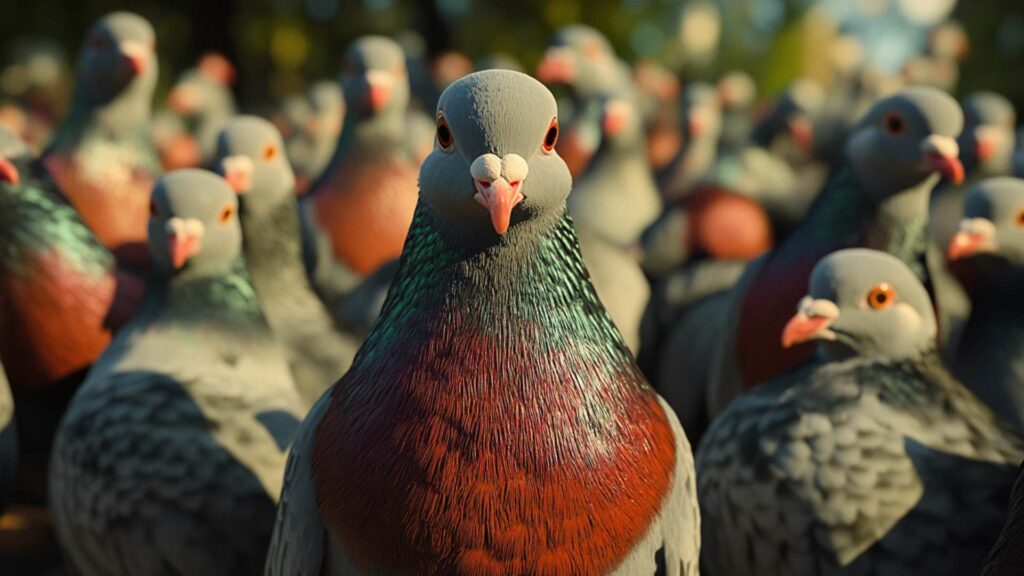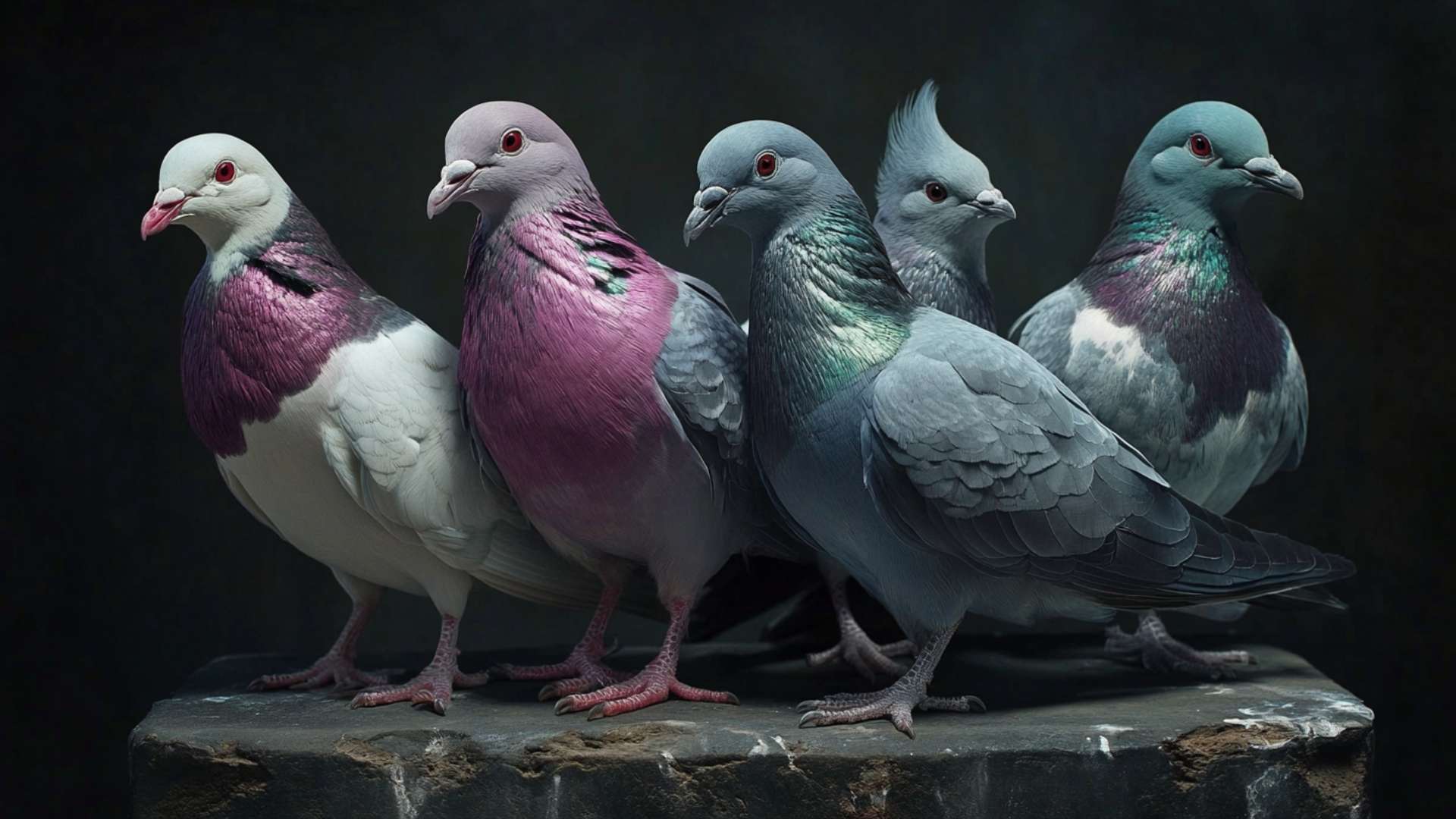Pigeons, those ubiquitous birds we often see perched on telephone wires or strolling nonchalantly through city streets, have a fascinating breeding pattern. They are known to be prolific breeders, with the ability to reproduce throughout the year under favorable conditions.
These birds typically form monogamous pairs that remain together for extended periods, sometimes even for life. Once they establish a bond, pigeons embark on the journey of building a nest and laying eggs.
Importance of Understanding the Egg-Laying Process
Understanding how pigeons lay eggs is valuable not only from an educational standpoint but also for those who wish to raise and care for these birds. By comprehending their reproductive cycle, enthusiasts can better support successful breeding in captive environments or appreciate the natural nesting behaviors observed in urban areas. Additionally, understanding the pigeon egg laying process in-laying allows us to grasp the significance of each stage in the reproduction process and appreciate the dedication and efforts of pigeons in ensuring their offspring’s survival.
When it comes to pigeon breeding habits, it is essential to delve into their nesting behavior and comprehend the intricacies of egg formation, pigeon egg incubation process, hatching process as well as parental care after hatching. Let us now explore these aspects further to acquire a comprehensive understanding of how pigeons bring new life into this world.
Pigeon Courtship and Mating Rituals

Description of Courtship Displays and Behaviors
When it comes to courtship, pigeons are not shy about expressing their love. Male pigeons, with their plump chests proudly puffed out, engage in a variety of attention-grabbing displays to woo potential mates. One such display is the “cooing” or “crooning” song, where the male pigeon emits a series of low-pitched coos, often accompanied by bowing movements.
This melodious serenade serves as a declaration of his affection and availability. As if the enchanting song wasn’t enough, male pigeons also perform an elaborate dance routine to captivate the attention of their desired partners.
They bow, bob their heads up and down rhythmically, strut about with fluttering wings, and even make graceful hops or spins in mid-air. These mesmerizing movements not only showcase their physical prowess but also serve as a visual spectacle that entices female pigeons.
Role of Male Pigeons in Attracting Mates
Male pigeons take great pride in attracting mates through their flashy displays and courtship rituals. Their goal is to stand out from the flock and win over the heart (or feathers) of a female companion.
It’s fascinating how these birds exhibit such dedication when it comes to finding a partner. One key element that draws female pigeons towards males is their ability to secure desirable territories for nesting.
In urban areas where traditional nesting sites may be scarce, male pigeons compete fiercely for prime locations such as window ledges or rooftops with ample space for building nests. The more comfortable and secure the nesting site appears to be, the greater the chances are for attracting potential mates.
Additionally, female pigeons mating and are drawn to mature male pigeons who have reached sexual maturity. As prolific breeders, pigeons have a strong drive to reproduce, and female pigeons instinctively seek out mates that exhibit signs of readiness.
These signs include the mature male pigeon,’s ability to coo loudly, display impressive courting behaviors, and demonstrate their capability to provide protection and sustenance for their potential offspring. In the intricate world of pigeon courtship, male pigeons play a vital role in capturing the attention of females through their striking displays and by securing favorable nesting territories.
Their elaborate dances, charming songs, and competitive nature make them quite the showmen in the avian world. It is through these courtship rituals that love blossoms among our feathered friends, ultimately leading to the wonderful cycle of pigeon egg laying and new life.
Nest Building and Selection

Types of nests used by pigeons
When it comes to nest building, pigeons are quite resourceful creatures. They have a knack for adapting to their surroundings and can construct nests in various types of locations.
The most commonly observed nest type is the simple platform nest, which is made from twigs, sticks, and grass. These nests are typically built on ledges or flat surfaces such as windowsills or rooftops.
Pigeons also utilize cavities in trees or even small crevices in city buildings as nesting sites. It’s fascinating to see how they manage to create these makeshift homes out of simple materials.
In urban environments, pigeons have been known to build their nests on balconies or fire escapes. Additionally, they may take advantage of man-made structures like air conditioning units or abandoned structures for nesting purposes.
These adaptable birds can even utilize existing nests from other bird species if the opportunity arises. Their ability to make do with whatever resources are available truly showcases their resilience and adaptability as urban dwellers.
Factors influencing nest location choices
Pigeon’s choice of a nesting site is influenced by several factors that ensure the safety and comfort of their offspring. One crucial aspect is protection against predators. Pigeons prefer nesting locations that offer some form of cover or elevation where predators like cats or larger birds cannot easily access them.
Another important factor is proximity to food sources. Pigeons select nest sites near areas abundant in food, such as parks with plentiful greenery or areas with human habitation where they can scavenge for scraps.
This proximity ensures that the parents can efficiently provide sustenance for themselves and their young without venturing too far away. Furthermore, the availability of suitable nesting materials plays a role in nest selection.
Pigeons use twigs, leaves, straw, feathers, and any other scraps they can find to construct their nests. Sites with easy access to these materials, such as gardens or locations near trees, are favored by pigeons during their nest-building phase.
Pigeons have a remarkable ability to adapt and create nests in a variety of environments. Whether it’s a humble platform nest on a city rooftop or a cozy cavity in a rural tree, these prolific breeders make the best out of their surroundings.
Their choice of nesting sites is influenced by factors like protection from predators, proximity to food sources, and availability of suitable nesting materials. Understanding the nuances behind pigeon nesting behaviors not only offers insights into their fascinating lives but also fosters coexistence between humans and these winged urban residents.
Egg Formation in Female Pigeons
Explanation of the Female Pigeon’s Reproductive System
Female pigeons, like most birds, possess a unique reproductive system that allows them to lay eggs. Within their bodies, female pigeons have two ovaries but only one is functional.
The functional ovary produces ova, commonly known as eggs. The ovary is connected to the oviduct, a long and coiled tube where egg formation takes place.
Development and Release of Eggs from the Ovary
The process of egg development in female pigeons begins within the ovary. Immature ova are stored in clusters called follicles. As the pigeon enters its breeding season, hormones stimulate one follicle to mature into fertile eggs while others regress.
Once matured, the egg leaves the follicle and enters the oviduct. The oviduct has different sections where many eggs or specific components of an egg are formed.
In the first egg section known as the infundibulum, fertilization may occur if a male pigeon has successfully mated with the female. From there, it moves into the magnum where albumen or egg white is secreted around it for protection and nourishment.
As it continues through the isthmus, shell membranes are added to strengthen and encase the developing embryo. Inside the shell gland or uterus, calcium carbonate is deposited around the forming eggshell until it reaches its final size before being laid.
This remarkable process ensures that each pigeon egg hatches and is carefully crafted within its mother’s body before being ready for laying. Remember: Pigeons are prolific breeders and can lay several clutches of eggs per year under ideal conditions!
Fertilization Process in Pigeons
The Intimate Dance of Cloacal Contact

When it comes to fertilization, pigeons have a rather unique and intimate process. Unlike other birds, where internal fertilization occurs through the joining of reproductive organs, pigeons engage in what is known as cloacal contact.
The cloaca is a multi-purpose opening located on the posterior end of the pigeon’s body, responsible for both excretion and reproduction. During mating, the male pigeon mounts the female from behind, aligning their cloacas to facilitate direct contact.
This act allows for the transfer of sperm from the male to the female, initiating fertilization. This distinctive method may seem peculiar to us humans but is perfectly natural for our feathered friends.
It exemplifies nature’s fascinating diversity and adaptability. So next time you spot two love-struck pigeons engaged in this unique ritual, you’ll know they are playing their part in ensuring future generations of these magnificent birds.
A Journey Inside: Internal Fertilization within Female Pigeons
Once fertilization occurs through cloacal contact with the male pigeon’s nest, an incredible journey begins within the female pigeon’s body. The sperm travels through her reproductive tract until it reaches the infundibulum – a small pouch where egg formation begins. Here, one lucky sperm cell fuses with an ovum (egg) that was released from her ovary.
The successful union of sperm and egg signifies a new life beginning its development inside the female pigeon’s oviduct. This process is known as internal fertilization—a remarkable feat achieved by these avian creatures with precision and efficiency.
From Ova to Chicks: The Miracle Within
With internal fertilization complete, it’s time for nature to weave its magic within the female pigeon’s body as she prepares to create life. The fertilized egg, or zygote, begins its transformation within the oviduct—a long and intricately structured tube where all the necessary components for the development of a baby pigeon are assembled.
Layers of albumen (egg white) and membranes gradually encase the growing embryo while the shell hardens around it. This eggshell provides protection and an optimal environment for development.
Over a period of 17-19 days, under ideal conditions, this miraculous process unfolds, ultimately leading to the hatching of adorable baby pigeons known as squabs. Witnessing this journey from fertilization to hatch to hatching is nothing short of awe-inspiring.
It serves as a reminder that even in seemingly ordinary creatures like pigeons, life can flourish in extraordinary ways if given the chance. Remember, next time you come across those seemingly abundant pigeon eggs and nests scattered throughout your cityscape, take a moment to appreciate the intricate process that allows these little miracles to come into existence.
Egg Formation and Structure
Within the female pigeon’s oviduct, the process of egg formation begins. This intricate process involves the development of an eggshell, which primarily consists of calcium carbonate.
The female pigeon’s body produces a substance called shell gland secretion, which is actively involved in the formation and deposition of the eggshell. As the egg moves through the oviduct, it gradually becomes coated with this secretion, resulting in the formation of a sturdy and protective shell.
A pigeon eggshell typically possesses two distinct layers – an outer layer and an inner layer. The outer layer is porous, allowing for gas exchange between the developing embryo inside and its surroundings.
The inner layer, on the other hand, provides additional protection to the embryo by acting as a barrier against harmful bacteria or contaminants. This layered structure ensures that the developing baby pigeon inside is well-protected while still being able to receive oxygen for its growth.
Egg Laying Process

Pigeons exhibit remarkable timing and regularity when it comes to their egg-laying cycle. Female pigeons generally lay their eggs early in the morning, often around dawn or shortly after sunrise.
They usually lay one or two eggs at a time; however, some pigeons may occasionally lay three more eggs to hatch them in a clutch. During the process of laying eggs, female pigeons display specific behaviors that indicate their readiness to lay.
They may become restless and exhibit increased activity near their chosen nest site. The female pigeon also assumes a crouched position just before laying each egg, accompanied by rhythmic contractions as she expels it from her oviduct.
Incubation Period

After an egg has been laid by its mother pigeon, it enters into the incubation period, which is crucial for its development. Incubation is a process where both male and female pigeons can lay eggs and take turns sitting on the eggs to provide the necessary warmth required for proper growth.
This shared responsibility allows each parent to rest and forage for food, ensuring their own well-being as well as that of their offspring. The duration of the incubation period varies but typically lasts around 17 to 19 days.
During this time, the parents maintain a stable temperature by adjusting their body position and fluffing their feathers to create an insulating layer. They also rotate the eggs periodically to ensure uniform heat distribution how many eggs and prevent any potential damage caused by uneven pressure.
Hatching Process

Within the protective confines of a pigeon egg, remarkable changes occur during the hatching process. Inside each egg, an embryo develops from a fertilized ovum into a fully formed baby pigeon, called a squab.
Over time, this embryo undergoes various stages of development involving cell division and organ formation until it is ready to emerge into the outside world. When it’s time for hatching, baby pigeons use an egg tooth—a small protuberance on their beak—to crack open the shell from inside.
They exert pressure with their heads while rotating within the egg until they create a small hole called a pip. Gradually, they continue pecking away at the shell until they can emerge completely exhausted but full of life.
Parental Care After Hatching

Once hatched successfully from their eggs, young pigeons depend entirely on parental care for survival and growth. Both male and female pigeons actively participate in feeding and protecting their squabs. They regurgitate food known as “pigeon milk,” which is produced in their crops, to feed their offspring.
This highly nutritious substance contains proteins and fats crucial for the squabs’ rapid development. In addition to feeding, parent pigeons diligently protect their squabs from potential threats.
They keep a watchful eye on predators and will even chase away intruders who may pose a danger. Pigeon parents also maintain the nest by removing waste materials, such as pigeon droppings, to maintain a clean and hygienic environment for their young.
Conclusion – Importance of Understanding Pigeon Reproduction
Understanding how pigeons lay eggs and raise their young not only provides us with fascinating insights into avian biology but also sheds light on the remarkable resilience of these birds in urban areas. Despite the bustling city buildings and constant human presence, pigeons have adapted to reproduce successfully in these urban environments. Their reproductive cycle serves as a testament to nature’s adaptability and the enduring beauty of life itself.
Prevent Pigeon Problems with D-Termination: The Foremost Choice for Pest Control in Las Vegas!

If you’re grappling with pigeon-related challenges, D-Termination is here to provide assistance. Our team of experts is dedicated to deterring pigeons and revitalizing the cleanliness and integrity of your environment. Bid farewell to pigeons by selecting D-Termination for highly efficient pest control today!
You can reach us at 702-919-6310 or visit dtermination.com to schedule your pigeon control service and take back your space from these unwelcome pests.
Frequently Asked Questions:
Yes, female pigeons can lay eggs without a male, but these eggs won’t be fertilized.
Pigeons lay eggs by passing them through their oviduct and then laying them in a nest.
Pigeon eggs are typically small and white.
Pigeons usually lay eggs every 1 to 2 days during their breeding season.








